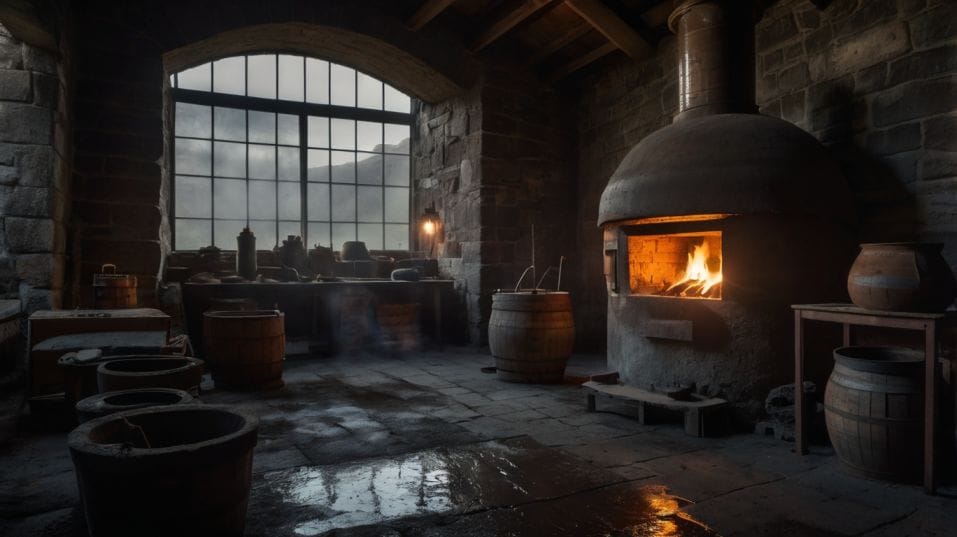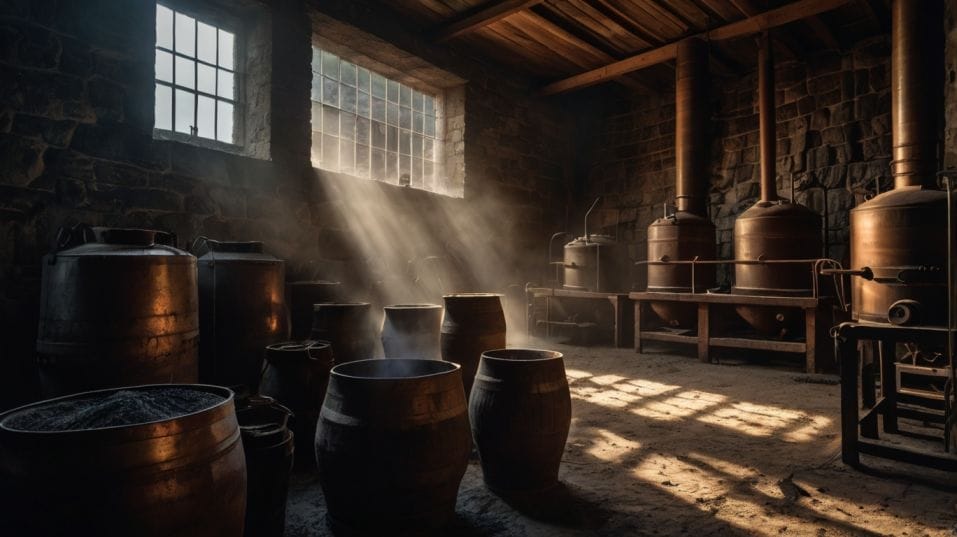Peat Levels by Region (With Tasting Notes)
Discover how peat shapes whiskey by region—from Islay to Japan—so you can taste with confidence and choose bottles like a seasoned pro.

What if smoke didn’t just flavor whiskey—but told you where it came from? Peat isn’t just fire and fog. It’s structure, tension, identity.
The way it’s used across regions—from Islay’s crashing waves of brine to Speyside’s soft, hidden heat—can unlock your palate in ways most drinkers miss.
Ready to stop guessing and start tasting with intent? Understanding peat by region is how you get there.
What Peat Actually Does to Whiskey
Peat is decomposed vegetation pulled from bogs and burned to dry malted barley. But its impact on whiskey depends on how much is used, how it’s burned, and—most importantly—where it's from.
Different soils, moisture levels, and plants in the peat bog affect the flavor of the smoke. So do malting techniques, fermentation times, and cask choices. Here’s what matters: Peat doesn’t just create “smoky” whiskey.
It creates specific types of smoke—ashy, oily, herbal, briny, sweet, dry, meaty—and it either leads the charge or quietly holds the frame. Learn how each region handles it, and you’ll stop being surprised by what’s in your glass.

Islay: Power and Precision
- Peat Level: High to extreme
- Tasting Notes: Seaweed, iodine, brine, tar, diesel, lemon peel, cigar ash
Islay is where peat becomes identity. The island’s whiskies are famous for their intensity: massive smoke, medicinal bite, and that unmistakable salty edge that feels like a cold wind off the Atlantic.
But there’s a catch—Islay isn’t one-dimensional. Yes, some expressions feel like licking a burnt pier. But others bring balance, sweetness, even delicacy behind the smoke.
What to look for:
- Southern Islay (e.g., heavily peated styles): More medicinal, maritime, with sharper phenolic notes—like antiseptic and wet rope.
- Northern Islay and less peated expressions: Smoke gets softer, earthier, often backed by honey, citrus, or even orchard fruit.
This is where you train your palate to see through the smoke. Can you pick out lemon behind the brine? Malt behind the ash? That’s where your skill sharpens.
Highlands: Structured, Earthy Smoke
- Peat Level: Low to medium
- Tasting Notes: Hearth smoke, dry grass, forest floor, charred wood, herbal peat
The Highlands cover a huge area, and peat here is more of an accent than a weapon. When used, it’s woven in—not slammed on top.
It gives structure and dryness, especially in otherwise sweet or malty drams. You won’t find heavy brine or medicinal notes here. Instead, Highland peat leans toward dry wood smoke, gentle spice, and a sense of balance.
What to look for:
- Central and Eastern Highlands: Rarely peated, but when it shows up, expect subtle earthy tones, sometimes grassy or floral smoke.
- Western Highlands: Peat can get more pronounced, especially in coastal distilleries, bringing drier, sometimes salt-kissed smoke.
This is where you learn control. Taste how peat shapes the whiskey without overpowering it. A little here says more than a lot elsewhere.
Islands (Excluding Islay): Rustic and Shifting
- Peat Level: Medium, with variation
- Tasting Notes: Campfire, driftwood, sea salt, clove smoke, honeycomb, pepper
The other Scottish islands—Skye, Jura, Mull, Orkney—don’t play by one rule. Island peat is unpredictable.
One distillery leans sharp and herbal, another leans sweet and smoky. Some whiskies start clean and explode mid-palate. Others roll out like fog—slow, coastal, evolving.
The peat here is less about smoke bombs and more about storytelling. It arrives in layers, moves through the glass, and shifts with air. The maritime influence is real but more atmospheric than aggressive.
What to look for:
- Skye: Peppery, spicy peat with salty citrus
- Orkney: Earthy smoke with honeyed malt and heather
- Jura and Mull: Smoky oiliness, leather, charred herbs
Island whiskies teach you to taste in motion. Not everything shows up at once. You’ll need to slow down and follow the trail.
Speyside: Subtle Integration
- Peat Level: Rare to low
- Tasting Notes: Toasted grain, charred oak, soft smoke, faint ash, warming spice
Speyside is better known for fruity, sherried, or malty whiskies—but some distilleries use peat to create contrast or complexity.
When peat appears, it’s surgical. You won’t smell campfire, but you might feel it in the dry finish or behind a swirl of stewed fruit.
This is a proving ground for subtlety. Can you find smoke in a glass that smells like pear and toffee? Can you taste the backbone peat provides without calling it out? That’s advanced-level sensory work, and Speyside is where to practice.
What to look for:
- Light peat as a stabilizer in sweet drams
- Some special peated releases with fruit-forward smoke
- Clean, dry finishes that hint at something smoldering beneath
Lowlands: Whisper-Level Peat
- Peat Level: Minimal
- Tasting Notes: Straw smoke, floral ash, roasted barley, sweet grain
Lowland whiskies are traditionally soft, grassy, and approachable. When peat shows up, it’s usually there to dry things out or keep sweetness in check. Don’t expect bombast. Expect finesse.
Here, peat is often more texture than flavor. It lends a slight roughness or savory tension to otherwise light, floral malts. Perfect for developing palate sensitivity and smoke detection.
What to look for:
- Fresh grain sweetness with a slight toast
- Peat that sharpens the finish rather than dominates the nose
- A feeling of dryness or lift rather than overt smoke
Beyond Scotland: Peat with a Passport
Peat is no longer confined to Scotland—and that’s good news for drinkers who want range. Other regions are taking peat in new directions, reimagining how it should behave.
Ireland
Traditionally unpeated, but some distillers are using bog-cut peat from inland regions. The result? More earthy than smoky. Expect wet soil, dark chocolate, leather, and faint campfire smoke wrapped in triple-distilled smoothness.
Japan
Precision is the theme. Japanese peated whiskies are clean, mineral, elegant. The smoke is refined—never overpowering. Often, it’s a whisper behind umami and dried fruit.
United States
American peat is a wildcard. Some distillers import Scottish peat; others use local variants. Smoke can range from BBQ and mesquite to forest fire and dark spice. Often paired with corn or rye mashbills, creating unexpected hybrids.
What to take away: Peat behaves differently outside Scotland—but the regional mindset still applies. Ask where the peat’s from. Ask how it’s used. That’s how you stay ahead of the curve and avoid gimmicks.
Final Thoughts
Peat is a tool. It’s not a trend, not a dare, not a gimmick. When used with purpose, it brings contrast, complexity, and clarity to whiskey.
Once you learn how each region uses peat differently, you stop being overwhelmed by “smoky” and start understanding why it tastes the way it does.
So don’t wait. Taste across regions. Train your nose to separate dry peat from wet, earthy from medicinal, clean from ashy.
Build a lineup that challenges you—Islay to Islands, Highlands to Japan. Every bottle you open is a step closer to mastering not just peat, but whiskey itself.
Open something new. Smell deeper. Taste sharper. That’s how you go from enthusiast to expert—one pour at a time.




